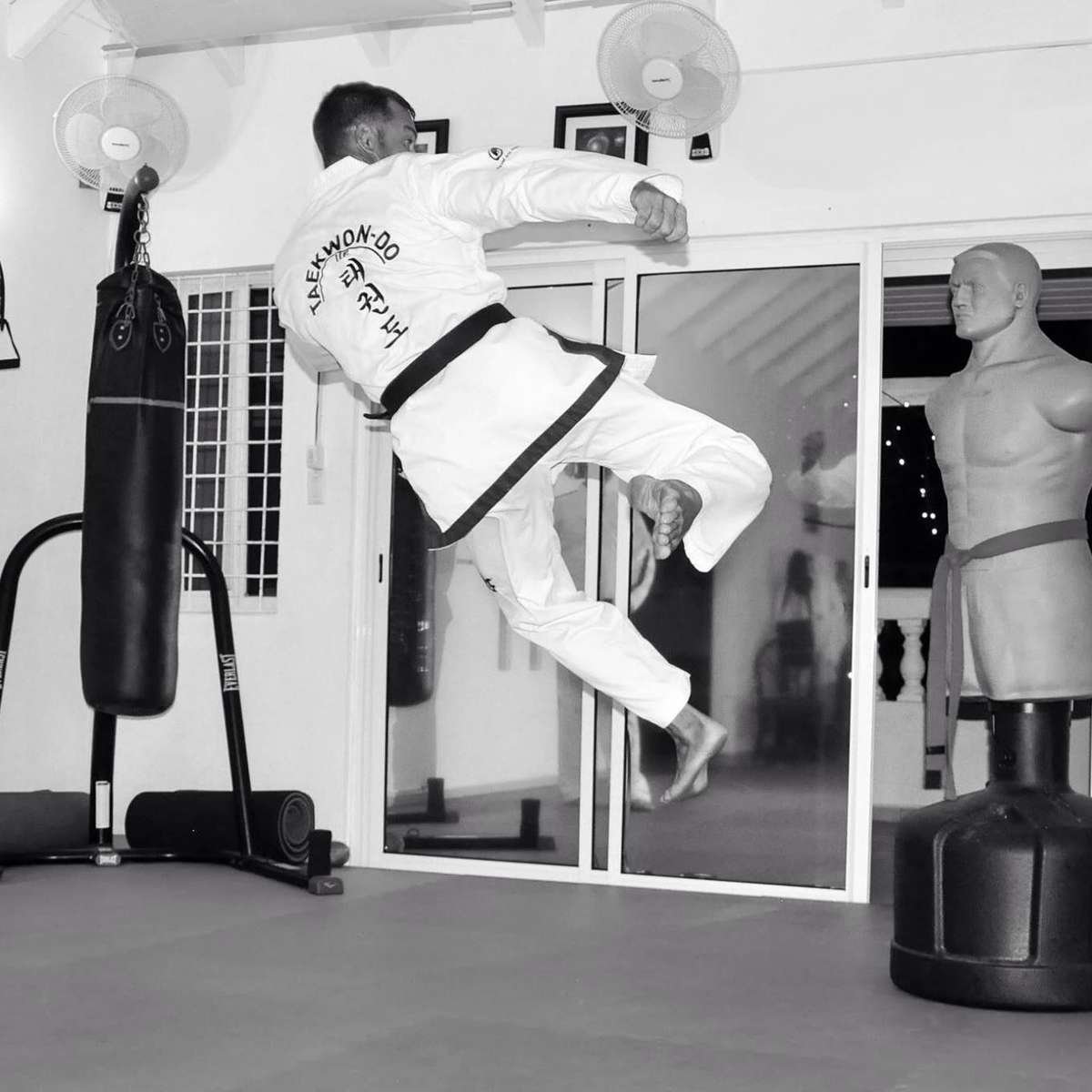Instructor Michel Wouterse - Bio
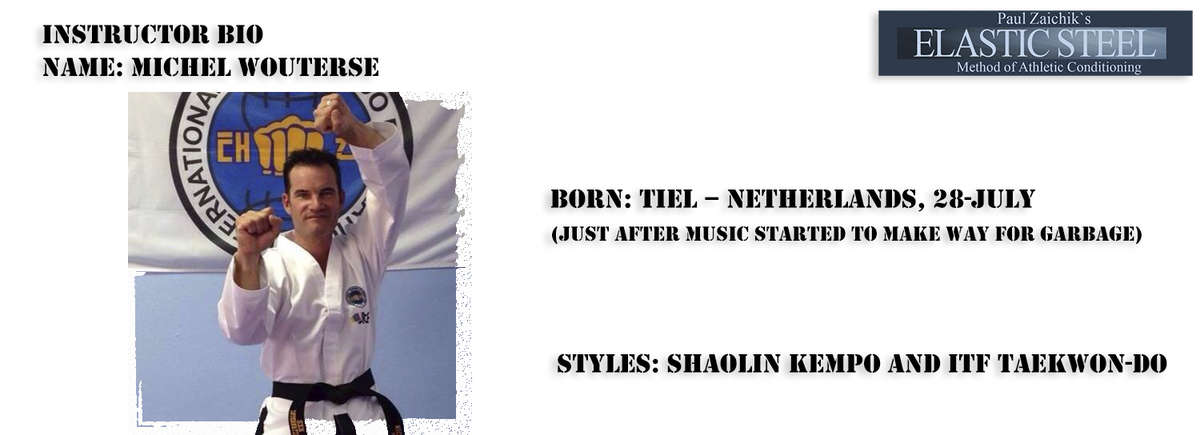
Nice to meet you fellow Martial Artists.
This is my story:
This is my story:
My father had me join a Shalin Kempo school when I was 11 years old, to harden me up a little after I was bullied at school by other kids. This started happening after I got glasses which in those days, was a perfectly fine reason for others to start beating me up. I practiced only in class, but it was 3 times a week and my sifu was Sfeer van Wijk, a 4th degree black belt and a pretty tough cookie.
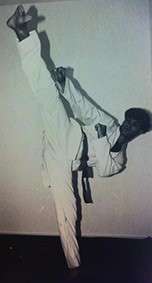
Him and his second, John Leenders, tought me well for a few years and my confidence got a little better. After that club stopped practicing a few years later, I joined Matsoki TaeKwon-Do, an ITF TaeKwon-Do club lead by Jan Linschoten, when I was 17. Being a white belt with some MA background, I moved up through the ranks pretty solidly and sparring was natural. It did help that my sisters boyfriend was lightning fast and I got to work out with him on almost daily basis and also my father joined together with my brother and sister… so TKD became a bit of a family thing. I loved it. Elastic Steel wasn’t around yet.
We’re talking 90’s here. Maybe it was being developed. I don’t know. All my stretching was old school. What you saw on TV and what my instructors did. I was pretty flexible at some point. Front splits were something I just did and not even thought about much. Side splits not so much, but that did never bother me at my TKD. Seemed unnecessary at the time and… kinda still does.
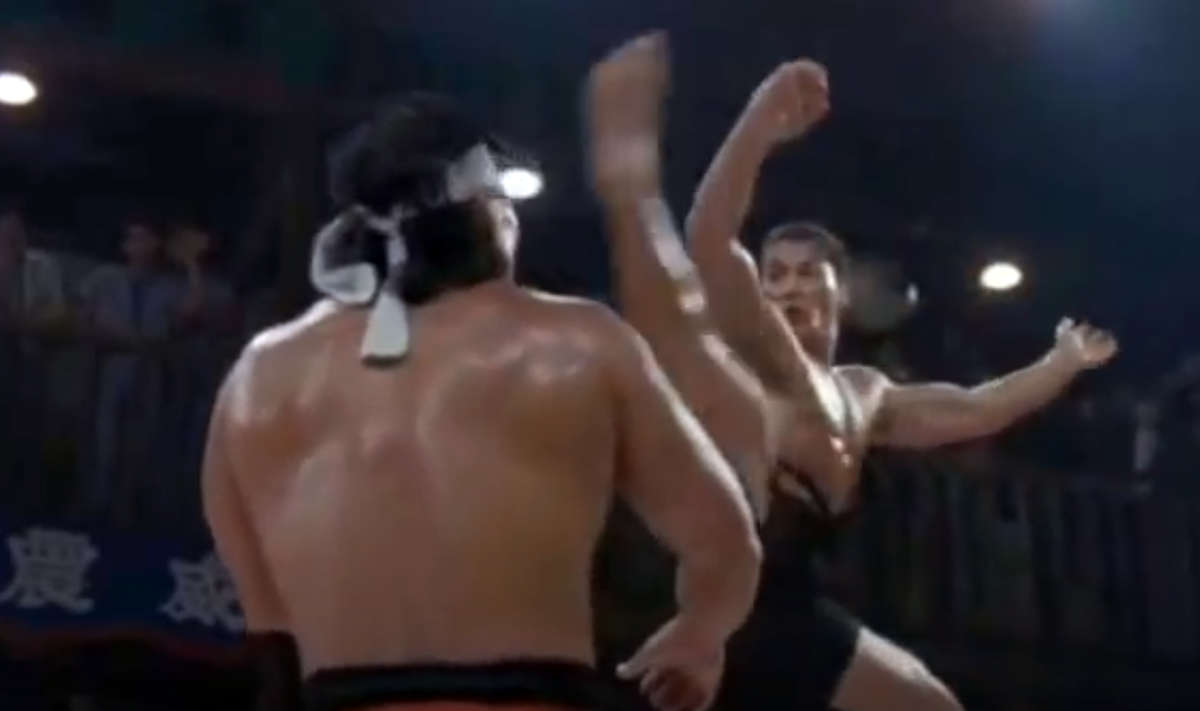
Life has a way of throwing curve balls. One day I was demonstrating a helicopter kick, just like the one in the picture. Unfortunately, back then you just copied kicks even if you knew you should not simply do that, cold and just out of bed, without any other movement before. I paid the price as something in my left leg went wrong. A sharp pain demanded attention. Apparently an adductor tendon in the groin area was not properly conditioned for this kick and so I ended up injured.
This particular injury was bad. I did not walk properly for months and obviously could not train at all. It forced me to give up Taekwon-Do temporarily. When I tried again after a pause of about a year, the injury manifested itself again and again I could not move without pain. I thought this was it and gave up
completely. This was in 1995.
completely. This was in 1995.
In the 2000’s I mainly focused on developing muscle. I trained with weights a lot and ate several diets to achieve a goal. My body went through several transformations and I was happy with the results. However, my love for martial arts never left me and I kept wanting to get back into it. Didn’t happen as I was raising a kid, working on a good IT career and also became a PADI Course Director (Dive Instructor-Trainer) and hobbied along flying a Cessna 152 and 172. Lots of fun, but still no Martial Arts.
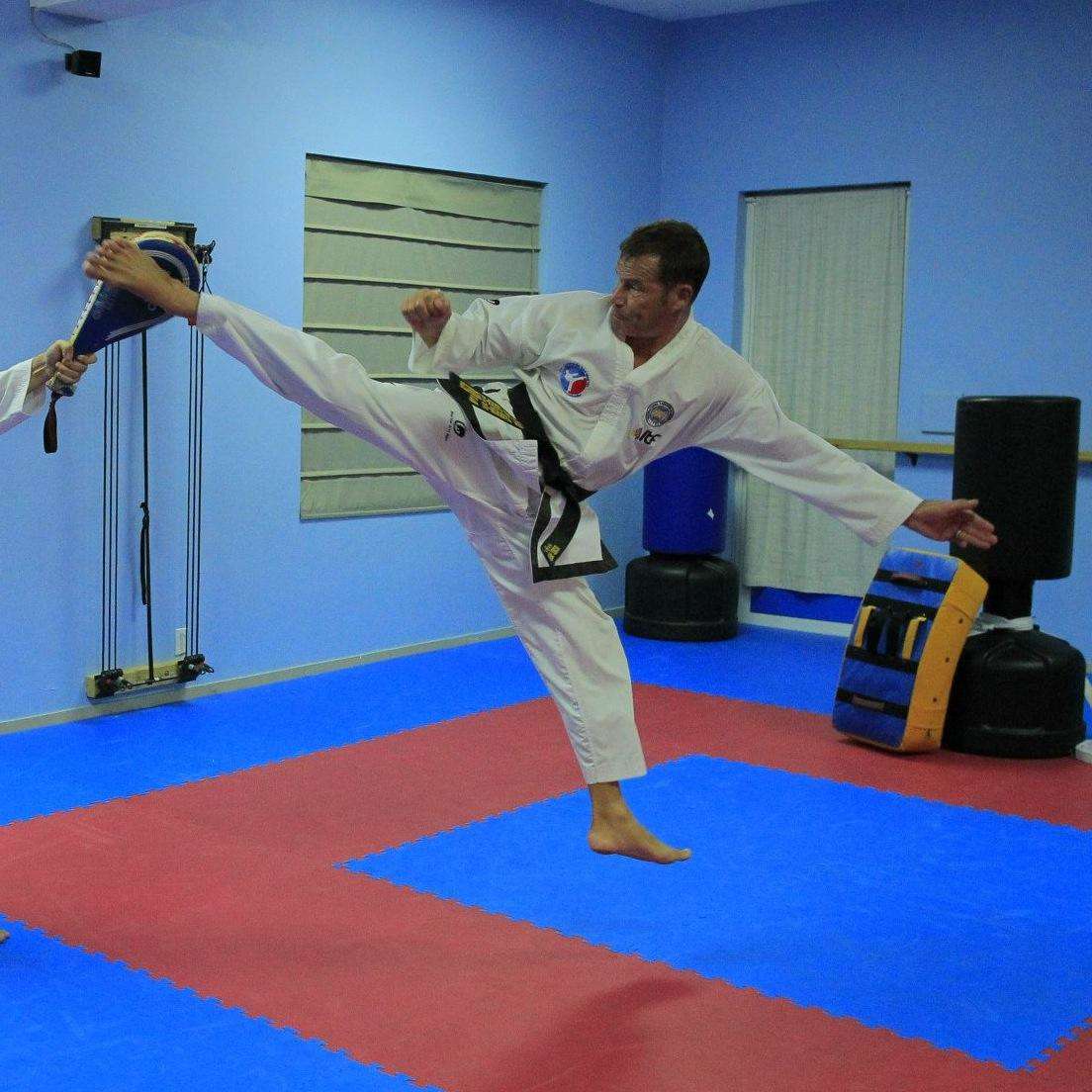
This changed when I met Mr Permuy from Anguila, a 4th degree ITF, as I had moved to the Caribbean and settled on Sint Maarten. I was browsing the internet one day and stumbled upon his dojang. 2 emails and a phone call later,
I found myself going to his dojang once every two weeks. I could not afford to
go more often, but when I went, trained for hours and also started training 2-3
hours at home, every day. This is also the moment I stumbled upon Paul Zaichiks Method of Athletic conditioning and bought ESKMS Level 1, 2 and 3 and that helped me get further with my kicks.
I found myself going to his dojang once every two weeks. I could not afford to
go more often, but when I went, trained for hours and also started training 2-3
hours at home, every day. This is also the moment I stumbled upon Paul Zaichiks Method of Athletic conditioning and bought ESKMS Level 1, 2 and 3 and that helped me get further with my kicks.
Pretty quickly I was in pretty good shape and… discovered I was doing pretty stretchy kicks again, not feeling any pain…ever. Here I am starting to develop the helicopter kick again. No pain and already fun and awesome. I am a first degree ITF TaeKwon-Do here. Mr Permuy worked with me and now I am a Third DAN ITF, since June 23rd, 2018.
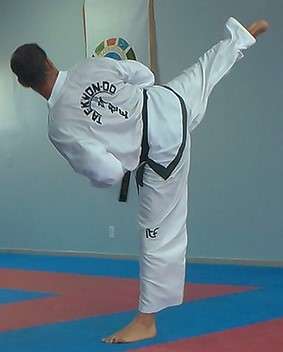
Between 2014 and 2018, I have used several systems to get more flexible. Old school, Pavel Tsatsoulini, Tom Kurtz, simply Youtube routines from some people. All did little for me or I had to recover and wasn’t able to train for days lengths in between. More and more I started to read up on ZST and trying some of this mysterious method. For me the reason I am so enthusiastic about ZST and teach it to others now, is that all flexibility I have now, is readily available (also cold) when I need it. I am never really sore from my “stretching routine” or at least it is mild and over with quickly. This means I can train way more often and that is giving me results that areuseful.
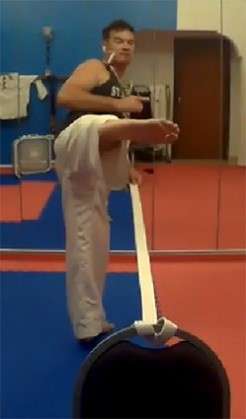
My sideline kicks are at eye level ….. of a person 6 inches taller than me and in full control. I can hold a sideline kick out effortlessly for several seconds. I can kick higher too, but in the “kick someone off a horse” sideline kicks I am not at that level of control yet. I am sure I will be shortly. (but will never really need to kick that high, I think)
Good to meet you! I am Michel Wouterse and I am ready to help you achieve your goal of higher, more precise, controlled kicks, using the full range of Zaichik’s Stretching and conditioning techniques. Contact me with details of your kicking desires and I will get back to you and establish a session to help you get there faster.
Click on the ADD TO CARD button Below to Get your ElasticSteel Side Kick and Side Line Kicks: Supporting Leg Training For Kicking Height Development Program.
© ElasticSteel Corp., EasyFlexibility, Paul Zaichik, et. El., 2022. No part of the materials available through ElasticSteel.com, EasyFlexiiblity.com, site may be copied, photocopied, reproduced, translated or reduced to any electronic medium or machine-readable form, in whole or in part, without prior written consent of Paul Zaichik EasyFlexibility.com, Elasticsteel.com.. Any other reproduction in any form without the permission of Paul Zaichik EasyFlexibility.com, Elasticsteel.com is prohibited. All materials contained on this site are protected by United States copyright law and may not be reproduced, distributed, transmitted, displayed, published or broadcast without the prior written permission of Paul Zaichik, EasyFlexibility.com, Elasticsteel.com.

